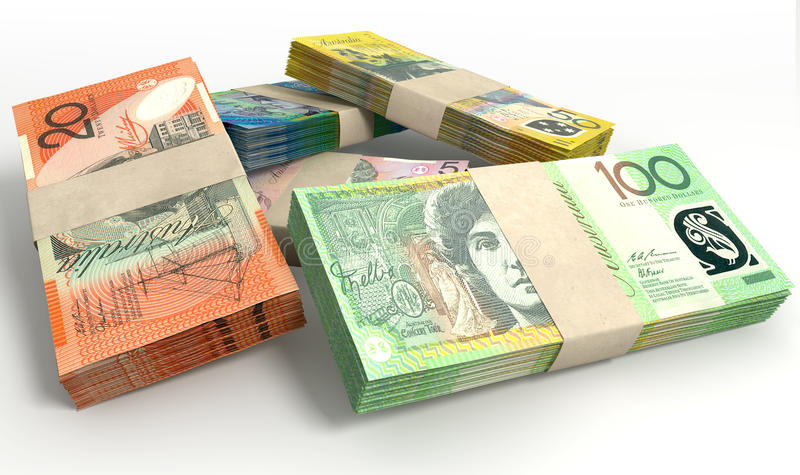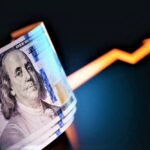Australian dollar rise as the RBA plans to continue implementing a restrictive monetary policy.
The Reserve Bank of Australia’s (RBA) hawkish outlook on interest rates helped the Australian dollar (AUD) recover some of its recent losses on Thursday. Even so, the US dollar (USD) may appreciate as a result of safe-haven flows amid the worsening Russia-Ukraine conflict, which could continue to push the AUDUSD pair lower.
RBA meeting, the board is still concerned about the possibility of additional inflation.
The minutes of the Reserve Bank of Australia’s November meeting showed that the board of the central bank is still on the lookout for the possibility of additional inflation, highlighting how crucial it is to keep a restrictive monetary policy. Board members emphasized that all options are still open for future adjustments, even though they pointed out that there was no “immediate need” to change the cash rate.
The cautious statements made by Federal Reserve (Fed) officials may limit the downside risk for the US dollar. Furthermore, the market anticipates that the incoming Donald Trump administration will increase inflation, which will slow the Fed’s rate-cut trajectory and support the greenback.
The Philadelphia Fed Manufacturing Index, Existing Home Sales, and the US weekly Initial Jobless Claims are all expected to be released later Thursday, and traders will be watching them all closely.
Daily Market update:Australian Dollar Rebounds recent losses as the RBA is hawkish.
The Reserve Bank of Australia’s (RBA) hawkish outlook on interest rates helped the Australian dollar (AUD) recover some of its recent losses on Thursday. Nearly 90% of economists (94 out of 106) predict a 25 basis point cut in December, bringing the fed funds rate down to 4.25% to 4.50%, according to a Reuters poll. Because President-elect Trump’s policies run the risk of increasing inflation, economists forecast shallower rate cuts in 2025. By the end of 2025, the fed funds rate is expected to be between 3.50% and 3.75%, which is 50 basis points higher than the forecast from last month.
While more interest rate cuts are required, policymakers should proceed cautiously to avoid moving too quickly or too slowly, said Susan Collins, president of the Federal Reserve Bank of Boston, on Wednesday, according to Bloomberg.
Fed Governor Michelle Bowman emphasized on Wednesday that inflation has been high over the last few months.
Fed Governor Michelle Bowman emphasized on Wednesday that inflation has been high over the last few months and emphasized the necessity of for the Fed to reduce interest rates gradually.
“Tumbling iron ore prices and a softening labor market have impacted government revenue,” said Australian Treasurer Jim Chalmers after his Ministerial Statement on the economy on Wednesday. Chalmers described Australia’s challenging economic outlook, pointing to the slowdown in the labor market and the deterioration of China, a significant trading partner, as contributing causes.
Jeffrey Schmid, the president of the Kansas City Fed, said Tuesday that he anticipates both employment and inflation to approach the Fed’s goals. Rate cuts, according to Schmid, indicate the Fed’s confidence in inflation moving in the direction of its 2% target. He added that although significant budget deficits won’t always cause inflation, the Fed might have to raise interest rates to offset possible pressures Ukraine launched US-provided ATACMS missiles against Russian territory for the first time late Tuesday, according to a Reuters report, marking a major escalation on the 1,000th day of the war. However, after Russian Foreign Minister Sergei Lavrov declared that the government would “do everything possible” to avoid a nuclear war, market worries somewhat subsided.
A National Development and Reform Commission (NDRC) official in China said Tuesday that the nation has “ample policy room and tools to support economic recovery.” The official was optimistic about China’s economic future and predicted that the recovery momentum would continue into November and December. Because the two countries are close trading partners, any shift in the Chinese economy could have an effect on the Australian markets.
Jerome Powell, the Fed chair, minimized the possibility of rate cuts soon.
Jerome Powell, the Fed chair, minimized the possibility of rate cuts soon, emphasizing the labor market’s strength, the economy’s resilience, and the ongoing inflationary pressures. Powell stated, “The economy is not sending any signals that we need to hurry to lower rates.”
Markets frequently overreact to interest rate changes, Chicago Fed President Austan Goolsbee said on Friday. Goolsbee underlined how crucial it is that the Fed proceed cautiously and gradually in its pursuit of the neutral rate.
While preserving market confidence in a possible rate cut in December, Boston Fed President Susan Collins moderated expectations for further rate cuts in the near future. “I don’t see a big urgency to lower rates, but I want to maintain a healthy economy,” Collins said.









